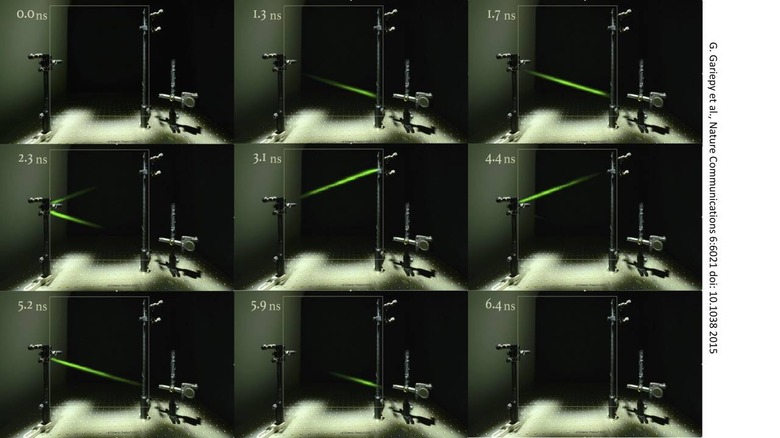EPFL Researchers And Canon Have Created A Camera That Can Image A Photon
EPFL researchers working with scientists from Canon have developed a new camera that can image the smallest particle of light- the photon. The camera they created is called the MegaX and is said to be the culmination of over 15 years of research on single-photon avalanche diodes or SPADs. SPADs are photo sensors that are used in the next-generation image-centered technology.
The significant feature of the camera that the scientists have created is that it's able to capture and count photons, which are invisible to the human eye. Humans are only able to see continuous beams photons, like those used in laser pointers. MegaX can fill in trajectories of individual photons and rays of light. The team says that when they are shown in video form, they look like shooting stars.
To be able to see individual photons move, the team had to slow the film speed by a factor of 300 million. MegaX is extremely fast and can take up to 24,000 images per second. To compare, movies are filmed at 24 images per second. MegaX also boasts a very large dynamic range and can produce 3D representations along with performing in-depth segmentation of those representations, at the same time.

The team behind MegaX says that it could be used for applications that incorporate virtual and augmented reality. The camera is able to capture individual photons and convert them into electrical signals that are stored in memory. The process of obtaining the photons takes one nanosecond. The camera is also able to detect precisely when the photon hits the sensor and measure how much time it took for the photon to travel between the object that emitted it and the camera. That allows it to calculate the distance or time-of-flight from the source that emitted the photon.
Time-of-flight is particularly important to allow the camera to generate the images quickly. A key feature of the camera is its ability to capture very light and very dark areas at the same time, substantially increasing dynamic range. The team is currently working to reduce the pixel size of the camera, which is currently very large at 9 µm compared to the 0.9 µm pixel size of a regular camera.
